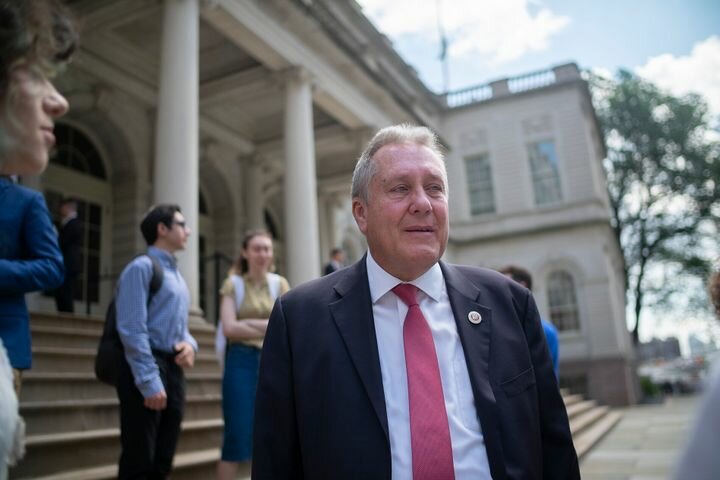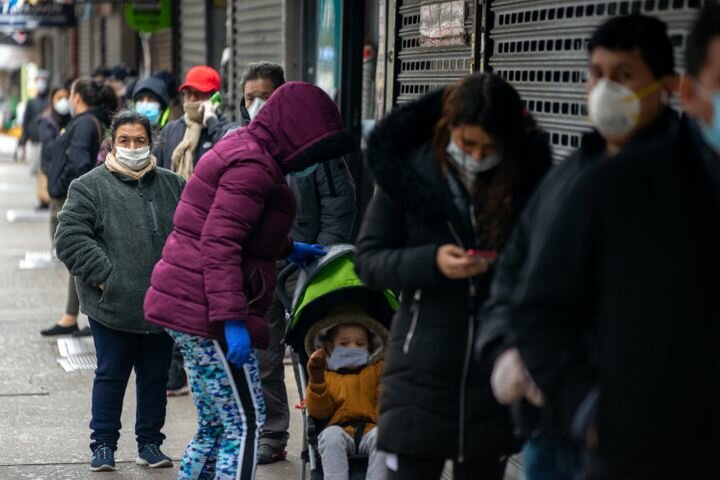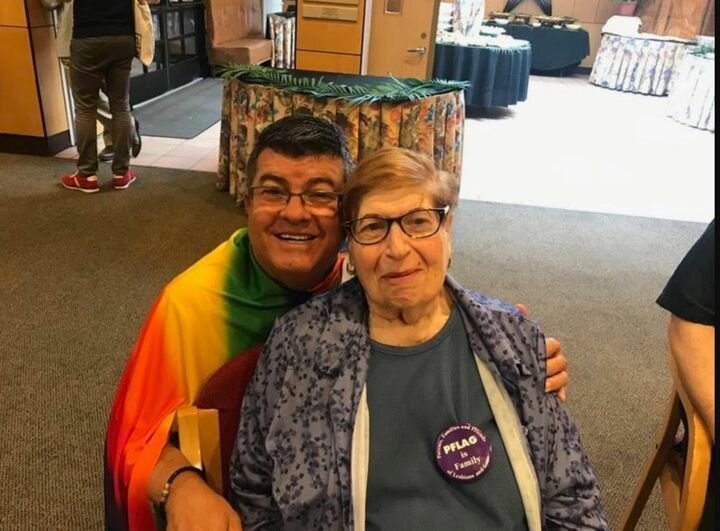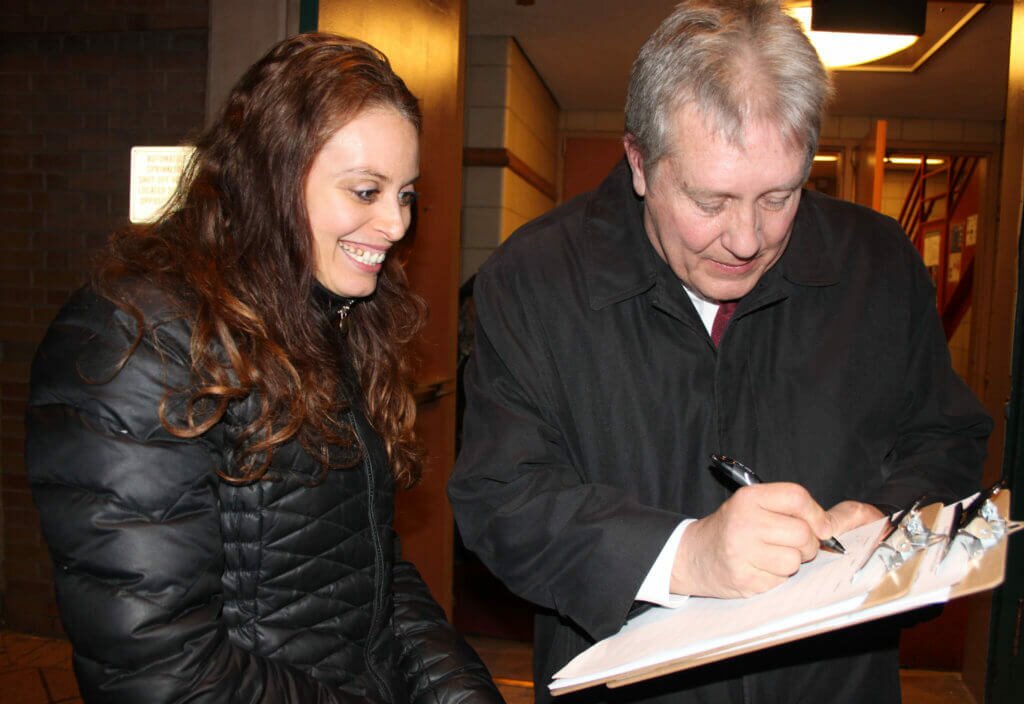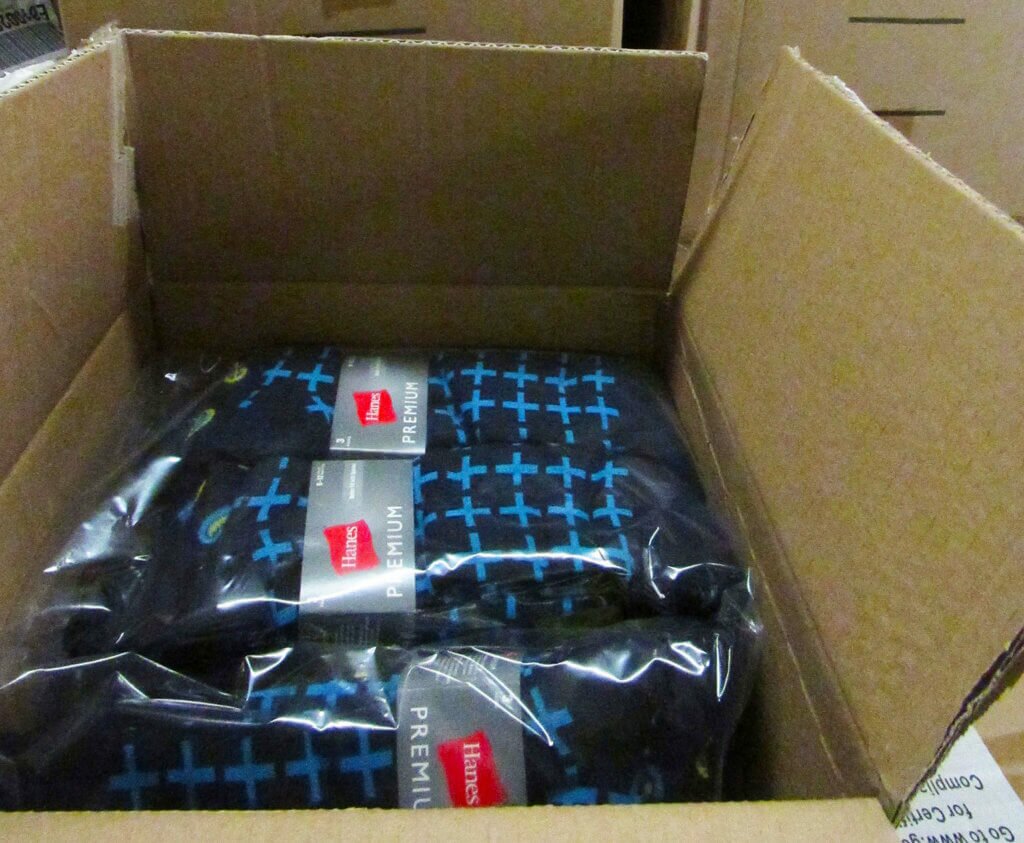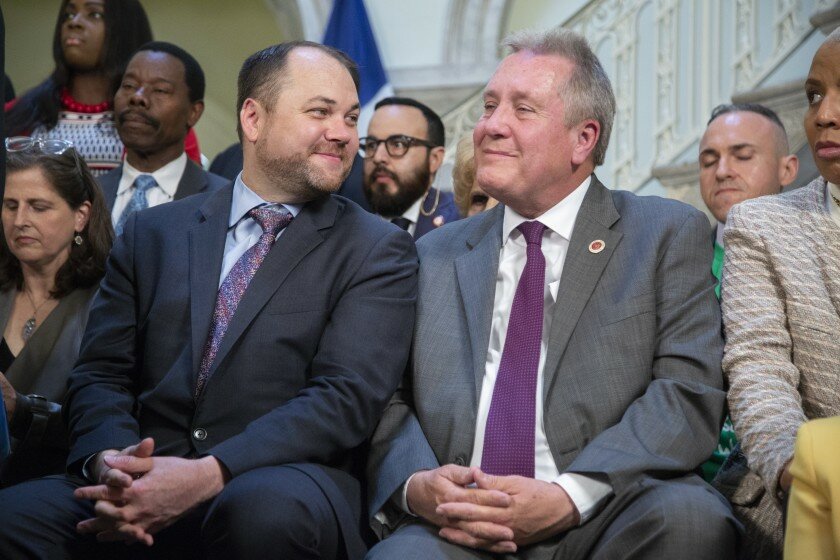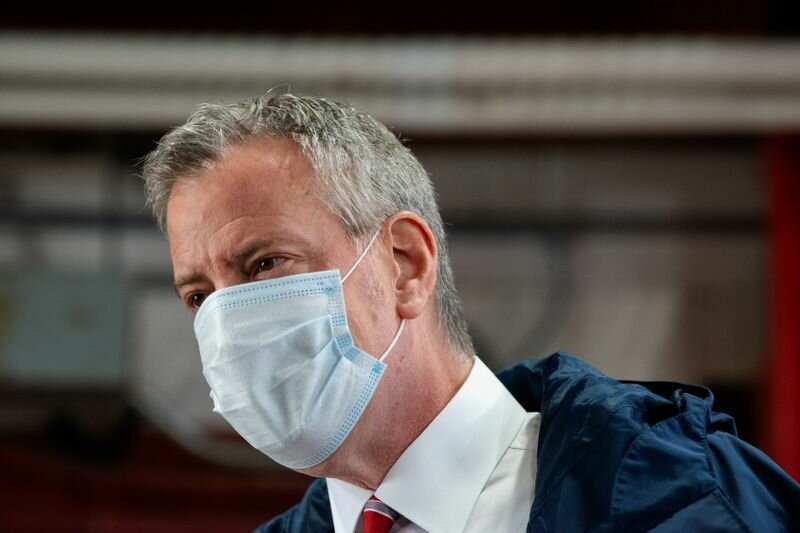
New York City Mayor Bill DeBlasio speaks to firefighters following the donation of meals on International Firefighters Day on May 4, 2020 in New York City.(Bryan Thomas/Getty Images)
By Shant Shahrigian
Originally published in the New York Daily News on May 6, 2020
Canceling this year’s NY Police Academy class and reducing funding for the mayor’s controversial ThriveNYC program are among the proposals City Council members are making as they try to find funding for their priorities and preserve New York’s social safety net in the face of massive tax revenue shortfalls.
With crime down amid stay-at-home orders, city funds would be better spent on social programs and food pantries than a new class of police cadets, said Councilman Donovan Richards (D-Queens), who chairs the Council’s Public Safety Committee.
“Imagine what we are facing with millions of New Yorkers out of work,” he told the Daily News on Tuesday ahead of the Council’s first budget hearing since the mayor proposed significant cuts last month. “There’s going to be a need for much more assistance for New Yorkers. I don’t think paying for another police class is the wisest choice right now.”
The NYPD previously pushed back graduation of this year’s class of roughly 587 cadets from April to July, saving about $6 million. With salaries for new officers in the $43,000 range, Richards said the city would save $25 million by completely canceling the class this year — funds that could go to other essential services, he added.
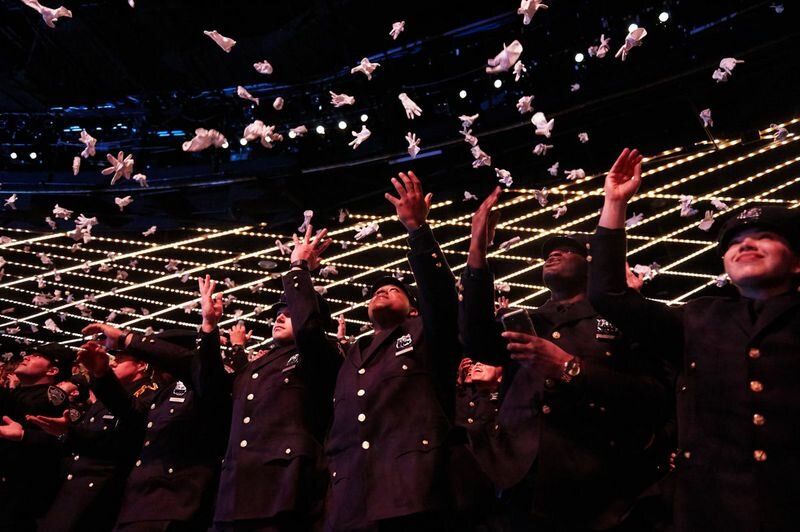
New members of the New York Police Department throw their gloves in the air during a Police Academy graduation ceremony at Madison Square Garden on Wednesday, April 18, 2018 in Manhattan. (James Keivom/New York Daily News)
Mayor de Blasio said at a Tuesday press conference he wasn’t mulling NYPD or Correction Department budget cuts.
“Both of them are doing extraordinarily important work and we need to keep them doing it, dealing with a lot of new challenges in this crisis,” Hizzoner said.
Many Council members are calling for the budget to restore funding for the city’s widely popular Summer Youth Employment Program, which the mayor put on the chopping block.
“It was just devastating that the entire youth budget for the summer was eliminated from the budget cycle,” said Councilwoman Deborah Rose (D-S.I.), who chairs the Council’s Youth Services Committee.
She said she was working with youth groups and advocates to find alternative employment during the age of social distancing, such as hiring youngsters to help with city food deliveries and different kinds of remote programming.
Rose said it was too soon to put a price tag on such an undertaking, but vowed there will be some form of summer youth employment, which hired 75,000 youths at a cost of $150 million last year.
“We’re going to need to figure out a way to get them engaged, to keep them engaged so that they are not in the streets doing nothing,” she said. “Our young people aren’t expendable.”
De Blasio has insisted there’s not enough money for the program, but said Tuesday he’s open to working the matter out with the Council.
ThriveNYC, the widely criticized mental health program led by First Lady Chirlane McCray, could provide Council members with leverage.
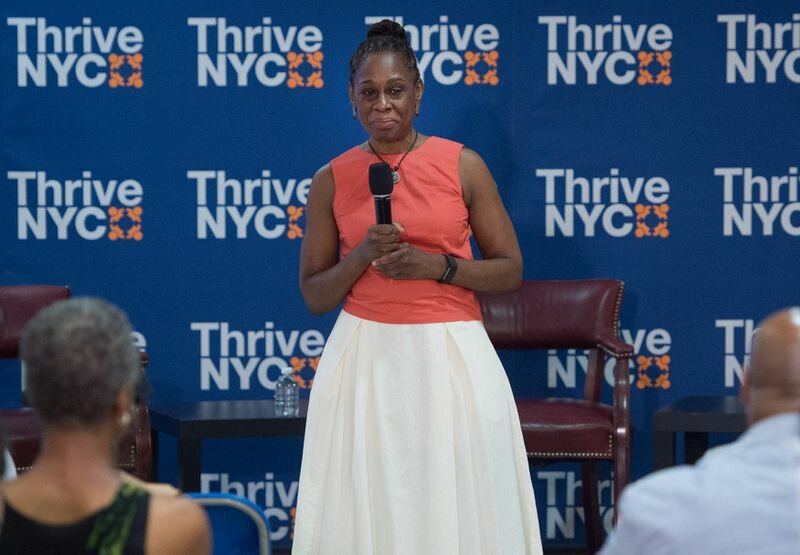
First Lady Chirlane McCray hosts a community conversation on mental health and substance misuse at the Queens Central Library on Tuesday, June 13, 2017. (Michael Appleton)
They’ve begun talking about cuts to the program, which critics fault for having little to show for its nearly $1 billion budget in recent years.
Councilman Mark Treyger (D-Brooklyn) said he’s identified $35 to $40 million in school-related Thrive funding that would not directly help students — money he suggested could be better spent on school staffing. The mayor’s $89.3 billion executive budget unveiled last month entailed over $800 million in Education Department cuts across this fiscal year and next.
The cuts “will absolutely devastate our school communities and disproportionately hurt those children who need the most help now,” said Treyger, who chairs the Council’s Education Committee. “You need more social workers, you need more counselors and actually even more teachers to deal with the class size issue,” he added, referencing the challenge of resuming classes with social-distancing rules likely to remain in place come the fall.
Earlier this year, the mayor proposed a $95.3 billion budget, but the coronavirus outbreak — and a projected $7.4 billion loss in tax revenue — prompted de Blasio to propose a range of painful cuts.
The revised budget includes $2.4 billion in funding for the city’s coronavirus response for this fiscal year — but nothing for next year, noted Councilman Daniel Dromm (D-Queens), who chairs the Council’s Finance Committee.
“That’s a concern for us,” he said. “In some ways, this budget is really about buying time to adjust to a new reality.
Read more here.

